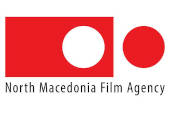The European media landscape is on the verge of a huge transformation. It is important to understand the terminology for multiplatform production. We are in the same situation as during media convergence. Vin Crosbie used a great analogy to that era by comparing convergence to teenage sex:
* No one knows what it is but thinks that it must be great.
* Everyone thinks that everyone else is doing it.
* Those who say they are doing it are probably lying.
* The few who are doing it aren't doing it well.
* Once they start doing it, they realise that it's going to take them a long time to do it right.
* They'll also soon start realising that there is no "right" way to do it
At present we are witnesses to the use of new buzz words such as transmedia or crossmedia in incorrect meanings. There is a fine line between these two terms. Monique de Haas defines crossmedia narration, such as "communication in which storyline guides the recipient from one medium to another.". In this case, the user navigates through the different media platforms in order to obtain any available information about an entertainment content.
In my opinion it is necessary to define the main two terms in media discourse. The best definition has been provided by Kevin Moloney:
1) Crossmedia = One story, many channels
2) Transmedia = One story world, many stories, many forms, many channels
It is clear that crossmedia does not expand the narrative of a fictional world, but only redistributes the content and information through the largest possible number of different media platforms. On the other hand, transmedia content expands the whole fictional world.
The main difference between these concepts is that transmedia provides different entry points into the complicated world that always offers a unique way of content consummation. The best examples of transmedia are the Star Wars, Lego or Walking Dead franchises. Each of them includes the rich media content on a different media platform which tells a new story. Also each medium expands the narrative in the unique way and gives the audience the opportunity to explore the affluent story world.
The best examples of crossmedia in the context of audiovisual content are adaptations. To this category, it is necessary to include "The making of" documentaries, soundtracks or compilations of botched scenes. None of these examples expands the story world but only retells same story.
Currently, the European Commission discusses the Audiovisual Media Services Directive in the context of digital single market. When the directive comes into force, it is going to change the entire character of the European media landscape. The impact this directive will have on the media ecosystem is still unknown. Broadcasters, distributors and producers face new challenges: Realisation of complex projects with territorial overlap and opportunities for active audience participation with different cultural context.
I hope this article helps you to understand better the nuances between transmedia and crossmedia narration. It is important to understand terminology well before we start exploring the affluent ways of transmedia and crossmedia storytelling and their application in practice.
Jorik Jakubisko is one of the leading European experts in transmedia problematics. He is co-owner of the Prague based Transmedialist which will publish the comic book Bouquet at November (CZ+SK). It is first pillar for transmedia project Czech Grimm.PhD He is student at FSV UK (Faculty of Social Sciences at Charles University - Institute of Communication Studies and Journalism) and he writting his doctorate dissertation on Transmedia in context of single European digital market . He also works as a creative partner in Jakubisko Film in Prague together with his mother and father Deana and Juraj Jakubisko.




















